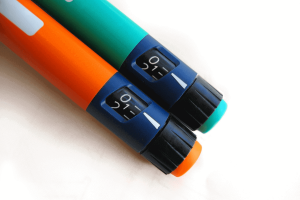The Low-Down on Low Blood Sugar: Hypoglycemia 101
So, what’s the deal with hypoglycemia?
Not to be confused with hyperglycemia, it’s a condition that occurs when your body has abnormally low blood sugar level (less than 70). According to the American Diabetes Association, it is characterized by the following symptoms:
Mild Symptoms:
- Shakiness
- Palpitations
- Sweating
- Dizziness
- Fast heartbeat
- Hunger
- Blurred vision
- Decreased concentration
- Headache
- Drowsiness
Moderate Symptoms:
Alli, one of the interns at My Diabetes Home, has dealt with hypoglycemia since she was young. We sat down with her for a few minutes to ask her how she deals with the condition day-to-day.
Q: How was hypoglycemia explained to you?
A: I always understood that hypoglycemia meant I had low blood sugar because my body doesn’t process glucose the way it should.
Q: How do you monitor your blood sugar?
A: I deal with my hypoglycemia based on how I feel. When my sugar drops too low, I don’t feel like myself and I know that I have to eat.
Q: How do you know when your blood sugar is low?
A: I get shaky and very moody. When this happens, I try to find food as quickly as I can, and avoid talking to most people. It’s tough to deal with hypoglycemia because loved ones oftentimes get the brunt of my moodiness–even though it’s not their fault.
Q: How often do you get bouts of low sugar?
A: Only when I don’t pay attention to my eating habits during the day. It used to be a lot worse when I was younger, because I wouldn’t recognize what my body was telling me. I often got so hungry that I couldn’t pick something to eat to get my sugar level back to normal. Now I usually carry some sort of snack with me just in case!
Q: Do you have any advice on how to best manage hypoglycemia?
A: I always try to eat balanced meals. The best guideline for a balanced meal is the MyPlate initiative that the USDA has implemented.
Q: What kind of foods do you eat to help keep your blood sugar balanced?
A: I try to stay with foods that are easily accessible, with a little to no fat, a relatively high amount of protein, and not much sugar. Some of my go-to snacks are cheese cubes or string cheese, granola bars, and fruits and vegetables.
- Staggering
- Confusion
- Inappropriate behavior
- Irritability
- Difficulty speaking
- Weakness
Note: The ADA recommends following the Rule of 15s when treating low blood sugar. If your blood sugar is less than 70, eat 15 grams of quick-acting carbohydrates, then retest in 15 minutes. After the second test, if your number is still below 70, eat another 15 grams of carbohydrates and test again in 15 minutes. After the third test, if your blood glucose number remains below 70, eat your next meal if it is time or eat a large snack of 1/2 sandwich and a glass of milk.Do you have any questions about hypoglycemia? Ask us in the comments. — photo credit: DeathByBokeh via photopin cc
Related articles
- Hypoglycemia – Not Just For Diabetics (makergoddess.wordpress.com)
- How to prevent from having a low blood sugar level? (diabetes.abc-healthy.com)
- How To Recognize and Treat Hypoglycemia (Low Blood Sugar) (diabeticmediterraneandiet.com)
- Tips for the Best Life with Diabetes (diabetesdaily.com)
- Low Blood Sugar Nightmares (iamatype1diabetic.wordpress.com)





I don’t even know how I ended up here, but I thought this post was great.
I don’t know who you are but certainly you are going to a famous blogger if you aren’t already
😉 Cheers!